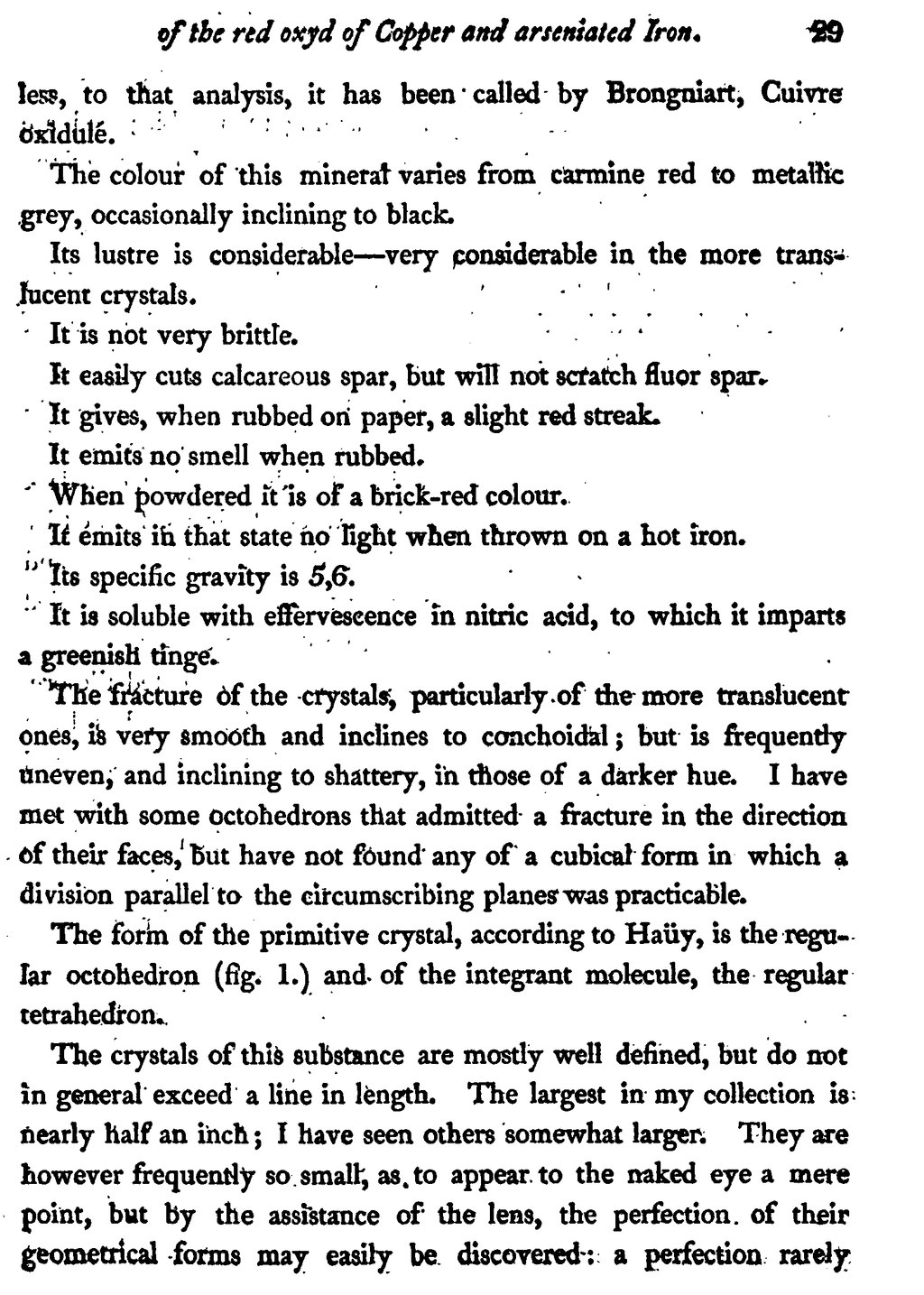less, to that analysis, it has been called by Brongniart, Cuivre oxidulé.
The colour of this mineral varies from carmine red to metallic grey, occasionally inclining to black.
Its lustre is considerable—very considerable in the more translucent crystals.
It is not very brittle.
It easily cuts calcareous spar, but will not scratch fluor spar.
It gives, when rubbed on paper, a slight red streak.
It emits no smell when rubbed.
When powdered it is of a brick-red colour.
It emits in that state no light when thrown on a hot iron.
Its specific gravity is 5,6.
It is soluble with effervescence in nitric acid, to which it imparts a greenish tinge.
The fracture of the crystals, particularly of the more translucent ones, is very smooth and inclines to conchoidal; but is frequently uneven, and inclining to shattery, in those of a darker hue. I have met with some octohedrons that admitted a fracture in the direction of their faces, but have not found any of a cubical form in which a division parallel to the circumscribing planes was practicable.
The form of the primitive crystal, according to Haüy, is the regular octahedron (fig. 1.) and of the integrand molecule, the regular tetrahedron.
The crystals of this substance are mostly well defined, but do not in general exceed a line in length. The largest in my collection is nearly half an inch; I have seen others somewhat larger. They are however frequently so small, as to appear to the naked eye a mere point, but by the assistance of the lens, the perfection of their geometrical forms may easily be discovered: a perfection rarely
